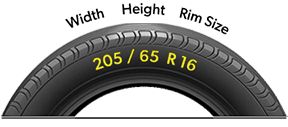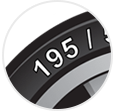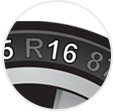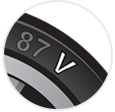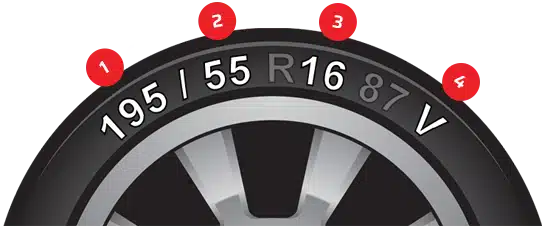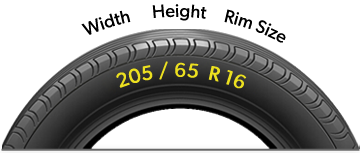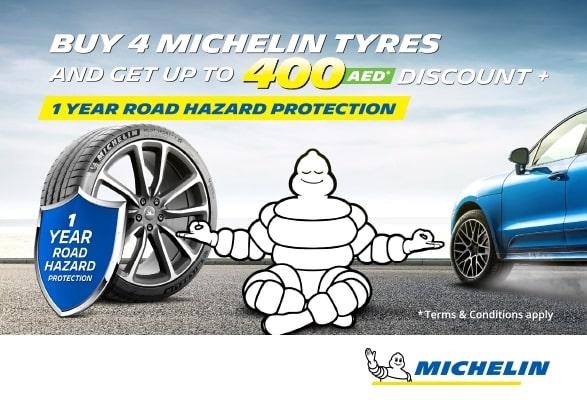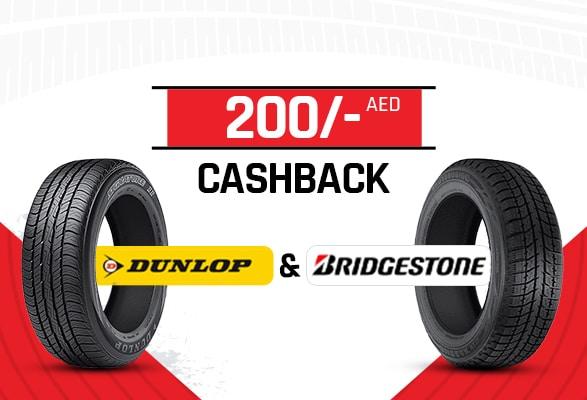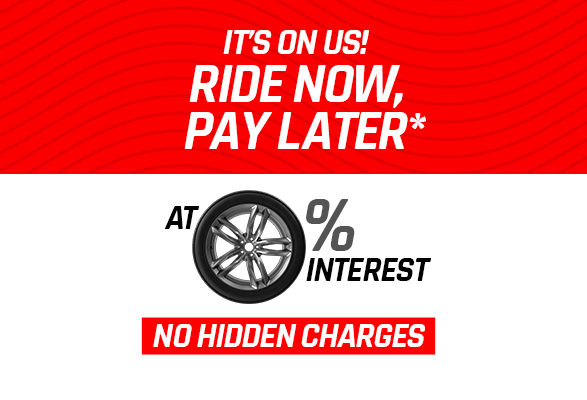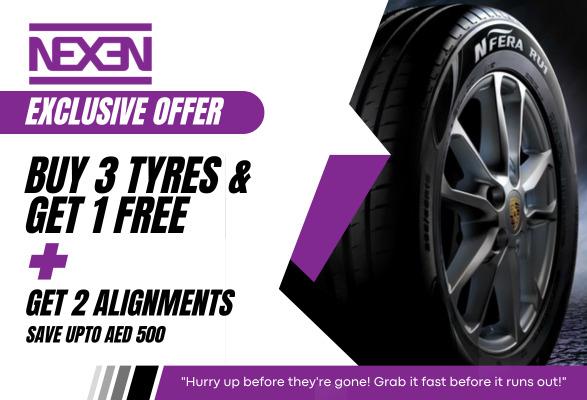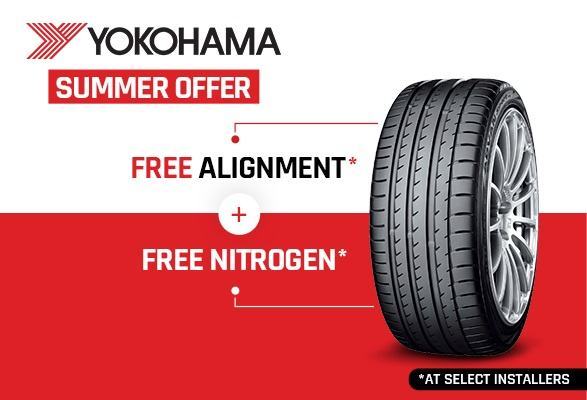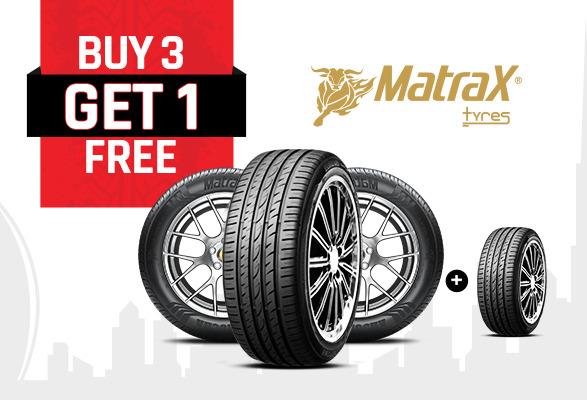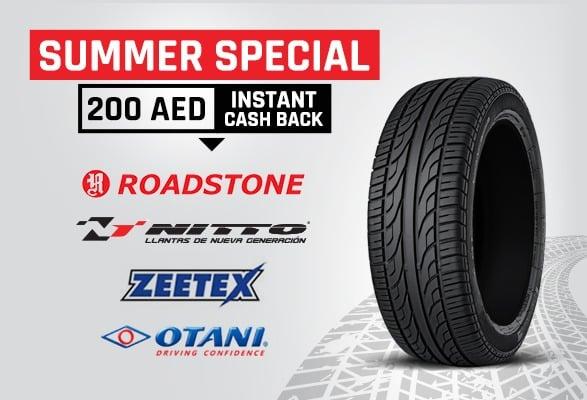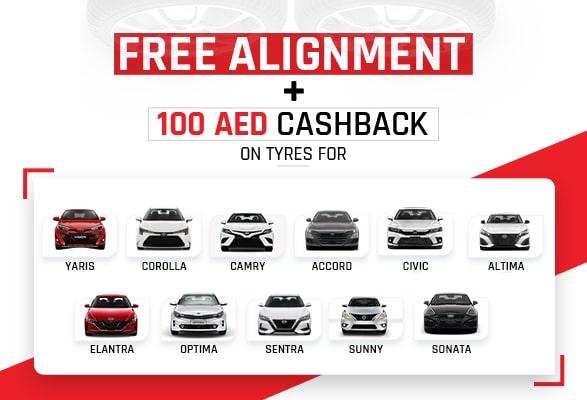How to Check Tyre Tread Depth and Condition: A Complete Guide
Do you know how to check your tyre tread depth and condition? If not, you should learn how to do it as soon as possible. Tyre tread is essential for your road safety, as it affects your braking, steering, and handling.
In this guide, we will show you how to check your tyre tread depth and condition in the UAE, when to replace your tyres, and how to extend their life. Read on to find out more and save yourself from potential accidents and expenses.
How to Measure Tyre Tread Depth

Tyre tread depth is the distance between the top of the tread and the bottom of the grooves. The legal minimum tyre tread depth in the UAE is 1.6 mm, but experts recommend replacing your tyres when they reach 3 mm for improved safety, especially in wet conditions.
To measure your tyre tread depth, you can use a tread depth gauge or a one-dirham coin. A tread depth gauge is a simple tool that you can insert into the grooves and read the measurement. A one-dirham coin is a handy alternative that you can use as follows:
- Insert the coin into the grooves with the palm tree facing up.
- If the tread partially covers the palm tree, your tyres are safe to drive.
- If the palm tree is fully visible, your tyres are below the legal limit and must be replaced.
You should check your tyre tread depth at least once a month and before long trips. You should also check the tread depth across the tire, as it may wear unevenly due to various factors.
How to Inspect Tyre Tread Condition
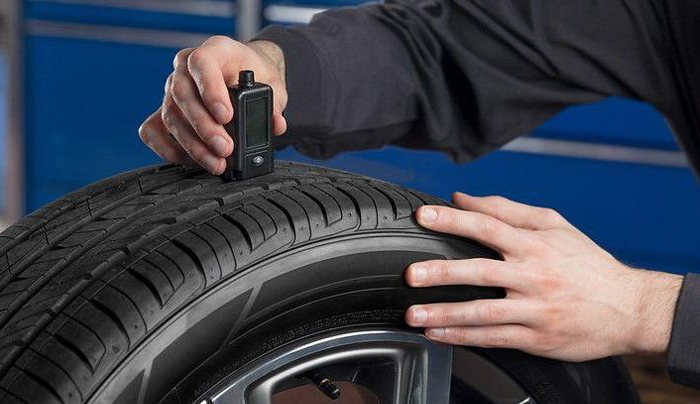
Besides tyre tread depth, you should also inspect your tyre tread condition for any signs of damage or deterioration. Some of the common issues that can affect your tyre tread condition are:
- Cracks
Cracks are small splits or fissures that can appear on the tyre surface due to aging, exposure to heat, or low tyre pressure. Cracks can weaken the tyre structure and increase the risk of air leakage or blowouts.
- Bulges
Bulges can indicate a separation of the tyre layers or a rupture of the inner tube, which can cause sudden tyre failure.
- Exposed cords
Exposed cords are the metal or fabric wires that form the tyre skeleton. They can become visible when the tyre tread is severely worn or damaged, exposing the inner layer of the tyre.
You should inspect your tyre tread condition every time you check your tyre pressure or notice any changes in your driving performance.
Why is Tyre Tread Important?
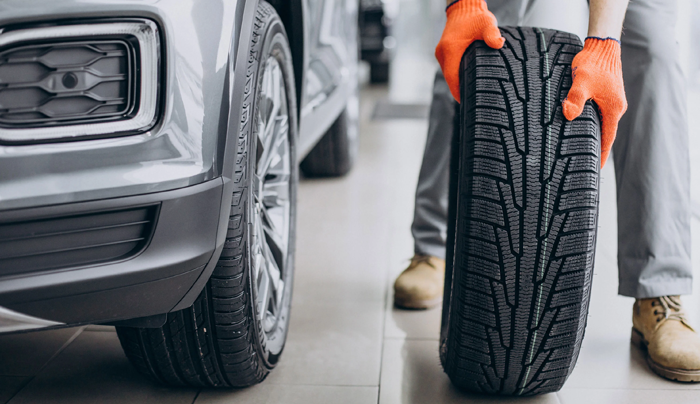
Tyre tread is part of the tyre that comes in contact with the road surface. It provides grip, traction, and stability, especially in wet or slippery conditions. Tyre tread also helps to disperse water, reduce noise, and improve fuel efficiency.
However, tyre tread wears out over time due to friction, heat, and road debris. Worn-out tyres can compromise your road safety, as they can:
- Reduce your braking and steering ability, increasing your stopping distances and the risk of skidding or losing control.
- Increase the chance of punctures or blowouts, which can cause sudden and dangerous accidents.
- Decrease your fuel efficiency, as they require more energy to move.
- Increase your maintenance costs, as they can damage your suspension, brakes, and other components.
Therefore, it is crucial to check your tyre tread depth and condition regularly and replace your tyres when necessary.
When and How to Replace Your Tyres
If your tyres are worn-out or damaged beyond repair, you should replace them with new ones that match your vehicle specifications and driving needs. Some of the factors that you should consider when replacing your tyres are:
- Tyre Size
You should choose the right tyre size for your vehicle, as indicated by the manufacturer or the tyre placard on your door jamb.
- Tyre Type
You should choose the right tyre type for your driving conditions, as different tyres have different tread patterns, rubber compounds, and performance characteristics. The main tyre types are summer tyres, winter tyres, all-season tyres, and off-road tyres.
- Brand
You should choose a reputable and reliable tyre brand that offers quality, durability, and safety. Some of the well-known tyre brands are Bridgestone, Michelin, Goodyear, Pirelli, and Continental.
How to Prolong Your Tyre Life
Replacing your tyres can be costly and inconvenient, so you should prolong your tyre life as much as possible by following some simple tips and practices. Some of the ways to extend your tyre life are:
- Maintain correct tyre pressure
- Rotate tyres regularly
- Align and balance tyres
- Drive safely
Conclusion
Checking and maintaining your tyre tread depth and condition is vital for your road safety and your vehicle performance in the UAE. By following these simple steps, you can ensure that your tyres are in good shape and that you are driving safely and efficiently.
FAQs
What is the easiest way to check tire tread?
The easiest way to check tire tread is to use a tread depth gauge or a coin. A tread depth gauge is a tool that you can insert into the grooves of the tire and read the measurement.
A coin is a simple alternative that you can use by placing it in the grooves and comparing the visibility of the coin’s design. For example, you can use a one-dirham coin in the UAE or a penny in the US.
How do I know if my tire tread is worn out?
You can tell if your tire tread is worn out by measuring the tread depth and inspecting the tread condition. The legal minimum tread depth in most countries is 1.6 mm, but experts recommend replacing your tires when they reach 3 mm for better safety and performance.
How do you know when your tyres need replacing?
You can check the manufacturing date on the tyre sidewall, which is a four-digit code that shows the week and year of production. Tyres generally have a lifespan of 5 to 10 years, depending on the usage and storage conditions.
Is 2mm tyre tread safe?
2mm tyre tread is safe in dry and normal conditions, but it is not safe in wet or slippery conditions. Tyre tread helps to disperse water and prevent aquaplaning, which is when the tyre loses contact with the road and skids. The deeper the tread, the more water it can disperse and the more grip it can provide.


